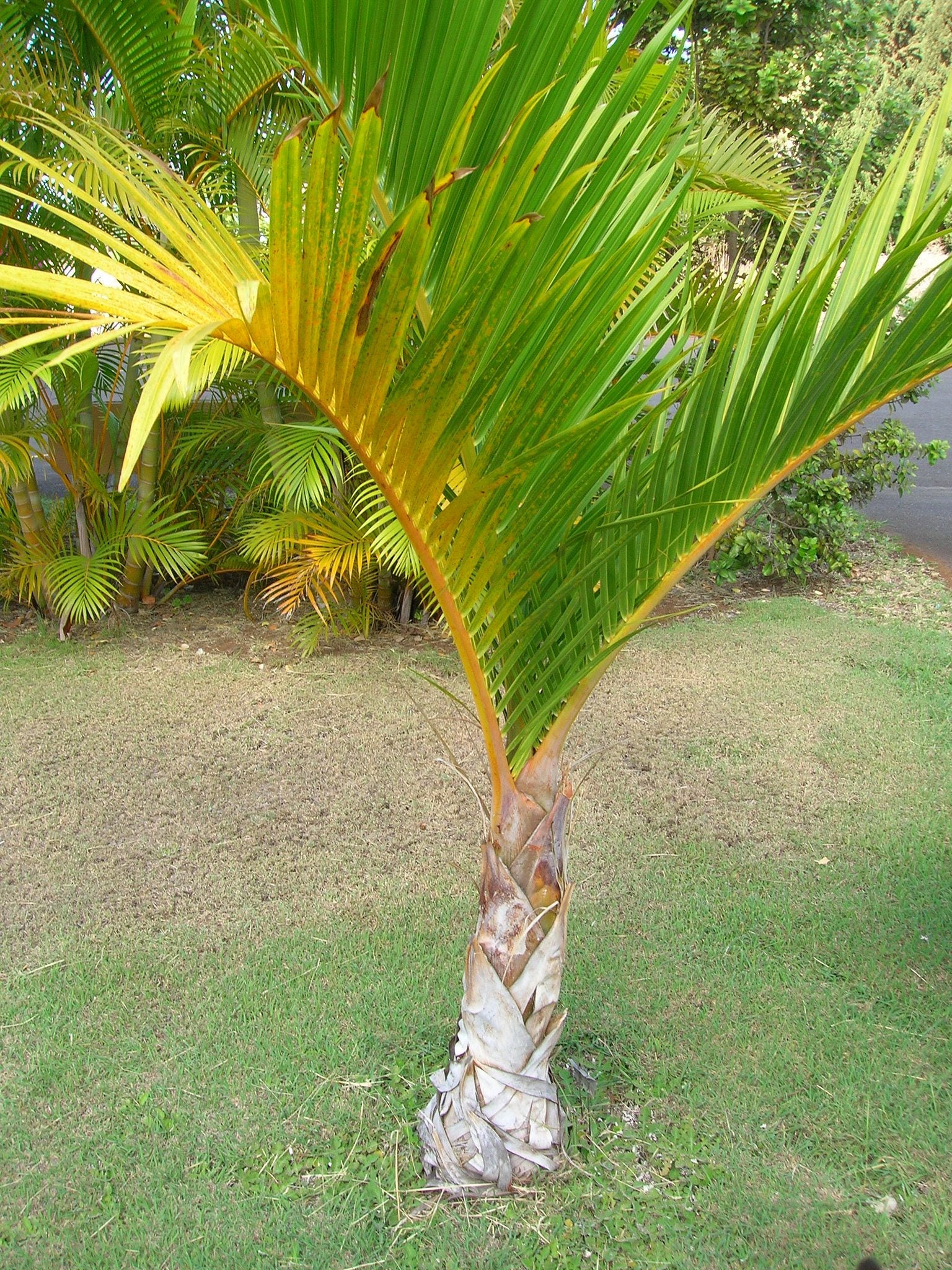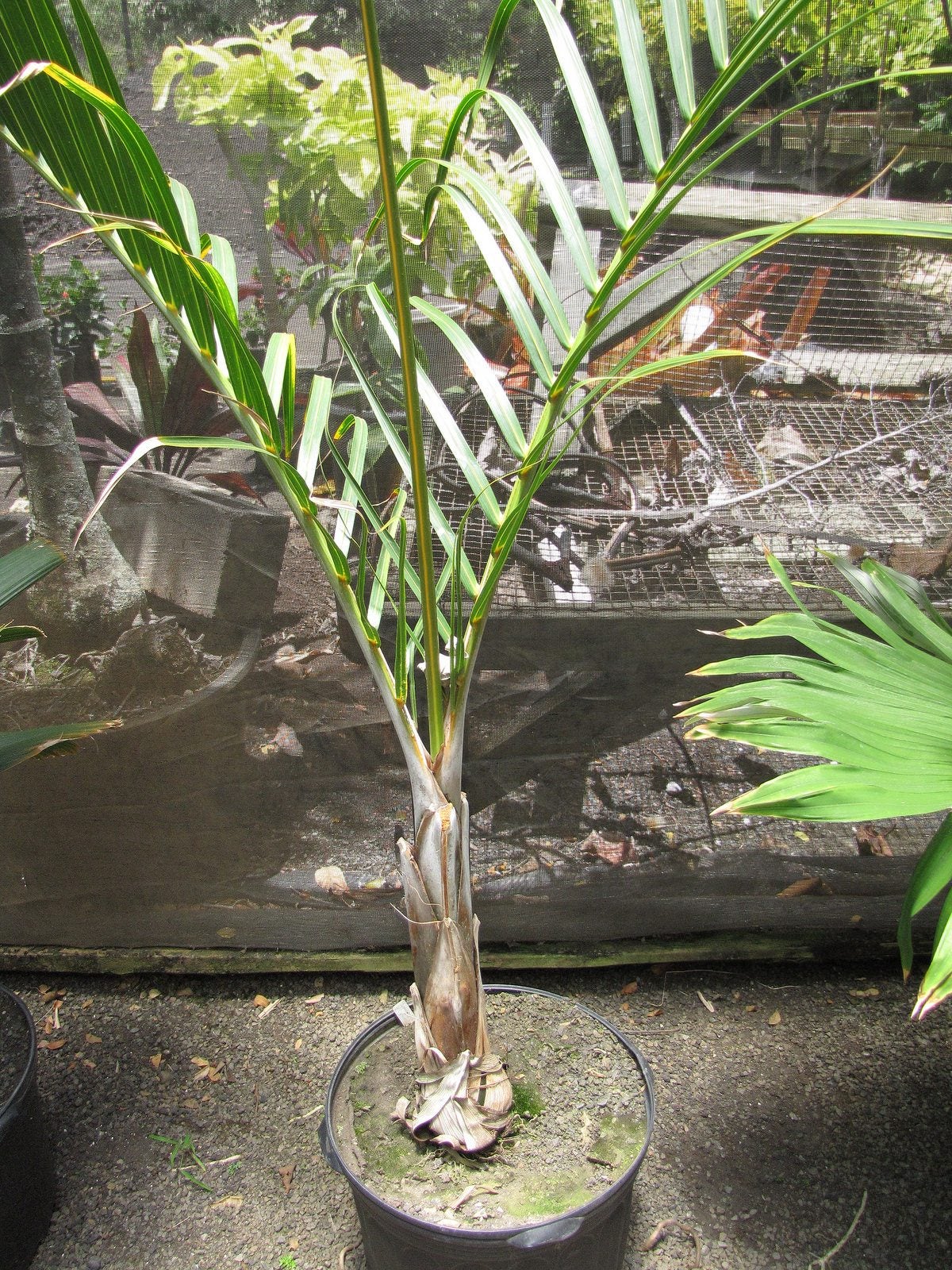Growing Spindle Palm Trees: How To Care For A Spindle Palm


Plant enthusiasts are often looking for a bit of tropical flare to add to the landscape or home interior. Spindle palms are about as tropical looking as you can have, along with ease of care and paced growth that makes them a trouble-free addition. This endangered plant is commonly cultivated and performs well in a range of areas provided enough light and space are available and freezing temperatures are not an issue. Learn how to care for a spindle palm plant and invite this exotic specimen to your home.
Spindle Palm Plants
Spindle palms (Hyophorbe verschaffeltii) are slow growing plants equally at home in containers or in-ground. The plants are native to the Mascarene Islands in the Indian Ocean. Spindle palm plants are so called because of the ridges on the trunk that resemble a spindle and the shape, which is narrow at the base, widens and then constricts where fronds begin to grow. The spindle palm is a true palm that may grow up to 25 feet in full sun conditions. The fronds are pinnately compound and up to 10 feet (3 m.) long with a foot (31 cm.) long petiole. This creates an arching effect that is elegant and pleasing as the leaves rustle in the wind. The trunk is light gray and swells midpoint, narrowing again into a slim, smooth green crown shaft from which leaves emerge. The creamy inflorescences are up to 2 feet (61 cm.) long in clusters and become orange to red fleshy fruits just under an inch (2.5 cm.) in diameter. In habitat, spindle palm growing conditions include sandy, well-drained soil and full sun. They often cluster together naturally in a grove. These plants look amazing in a similar form in the landscape or as stand-alone specimens in containers or garden beds. Many states do not have the correct spindle palm growing conditions for outdoor plants, but they can perform well potted in the home interior or greenhouse.
Growing Spindle Palm Trees
As an outdoor plant, spindle palms are recommended for USDA zone 10 and down to 9b. In areas with minimal frost, plant them in a large container on casters so you can move the palm to a protected area if a cold snap threatens. Container plants require good drainage, bright light, consistent moisture, and annual fertilizing. The nutrients most often needed in larger amounts are potassium and magnesium. Potassium deficiency will exhibit by large orange spots on the fronds. Good spindle palm tree care recommends an annual fertilization with a high potassium ratio once per year in early spring. In ground plants should be planted with topsoil or peat moss added to the hole. Growing spindle palm trees in a bright western or southern edge of the house can help protect them and provide the lighting experience they crave. Install them 4 feet (1 m.) away from the house to give the fronds room to grow.
How to Care for a Spindle Palm
Spindle palms are remarkably unfussy. Once established, they can tolerate brief periods of drought and saline conditions. They are not technically self-cleaning but grow so slowly you will only occasionally need to prune off dead fronds. Protection from frost is a large part of the plant’s care. Make a frame around the tree with chicken wire and cover with frost barrier fabric or even an old blanket when cold threatens. The plants also benefit from several inches (8 cm.) of organic mulch around the root zone. Just be careful to leave a couple of inches (5 cm.) around the stem free of mulch to prevent moisture build up and fungal issues. Water once per week during the growing season but, otherwise, this stoic plant can tolerate quite a bit of neglect and still stand elegant sentry to your landscape.
Gardening tips, videos, info and more delivered right to your inbox!
Sign up for the Gardening Know How newsletter today and receive a free copy of our e-book "How to Grow Delicious Tomatoes".

Bonnie Grant is a professional landscaper with a Certification in Urban Gardening. She has been gardening and writing for 15 years. A former professional chef, she has a passion for edible landscaping.
-
 Zinnias On Repeat: 10 Glorious Cut-And-Come-Again Varieties For Endless Summer Bouquets
Zinnias On Repeat: 10 Glorious Cut-And-Come-Again Varieties For Endless Summer BouquetsThese zinnia varieties keep giving all summer, making them the perfect choice for dedicated cutting gardens – or just the occasional homegrown bouquet.
By Ellen Wells
-
 Create A Romantic Garden Straight Out Of Bridgerton: Regency Era Romance In Your Garden
Create A Romantic Garden Straight Out Of Bridgerton: Regency Era Romance In Your GardenTry some romantic garden ideas straight out of Bridgerton. Flowers and gardens in the Regency era were lush and charming and you can get the same look!
By Bonnie L. Grant
